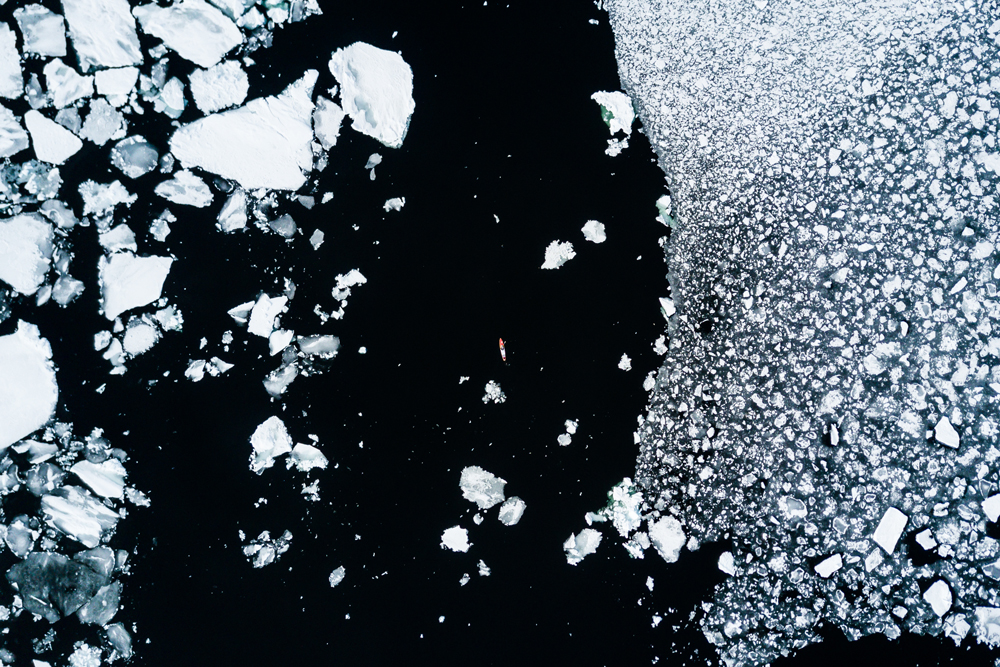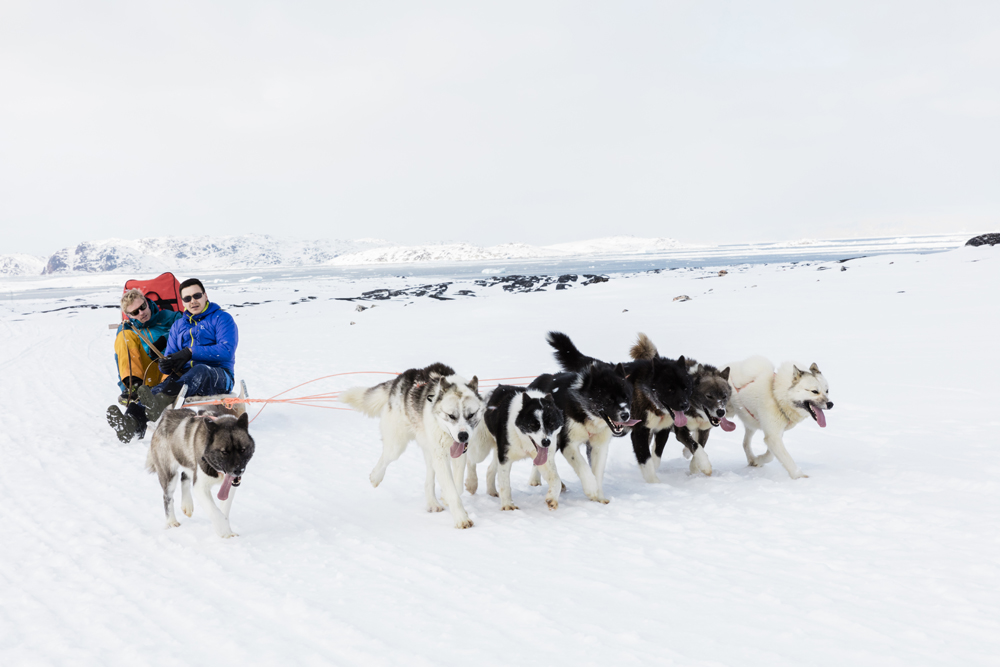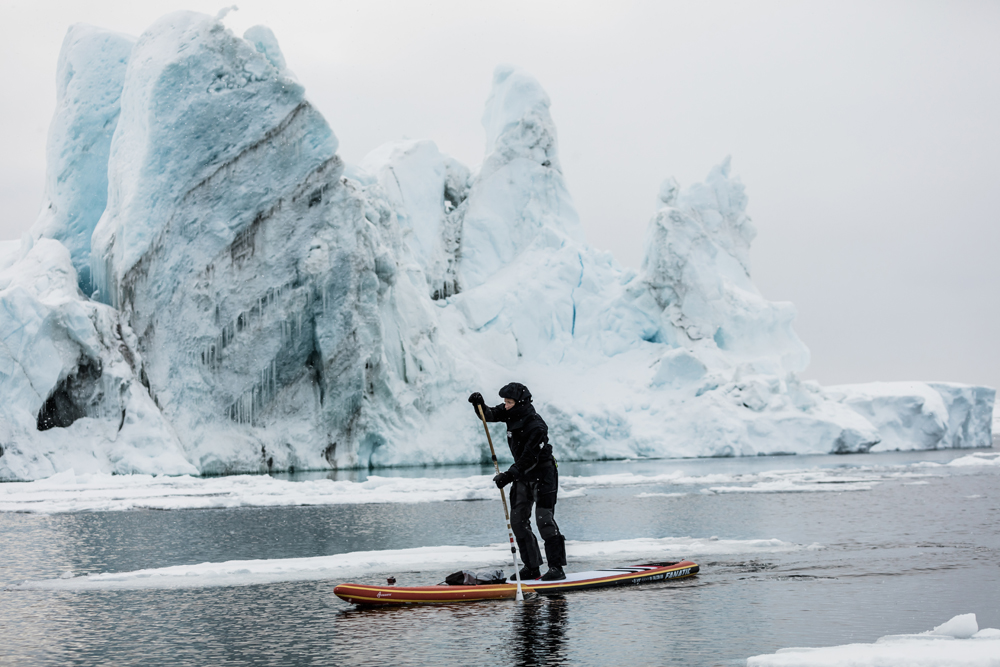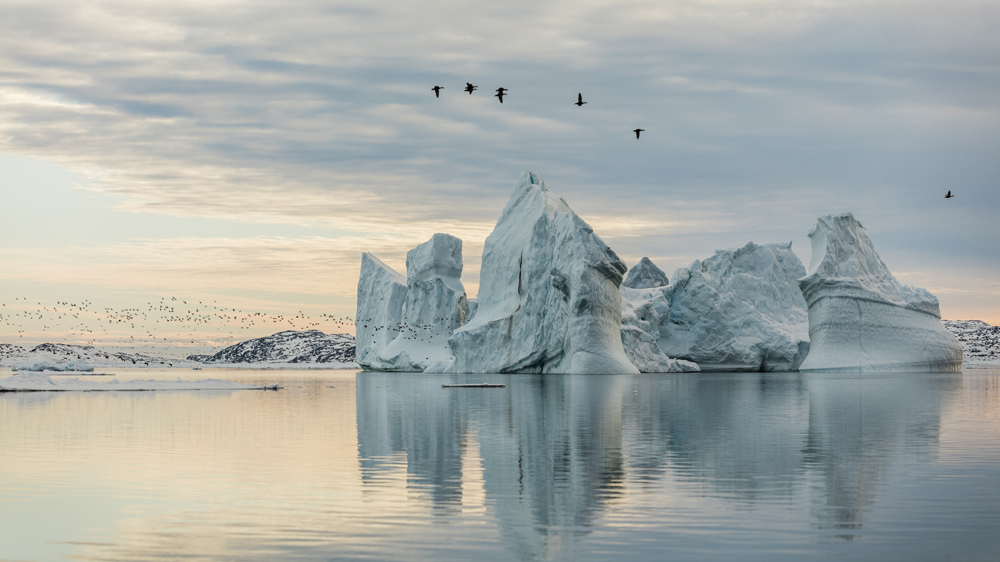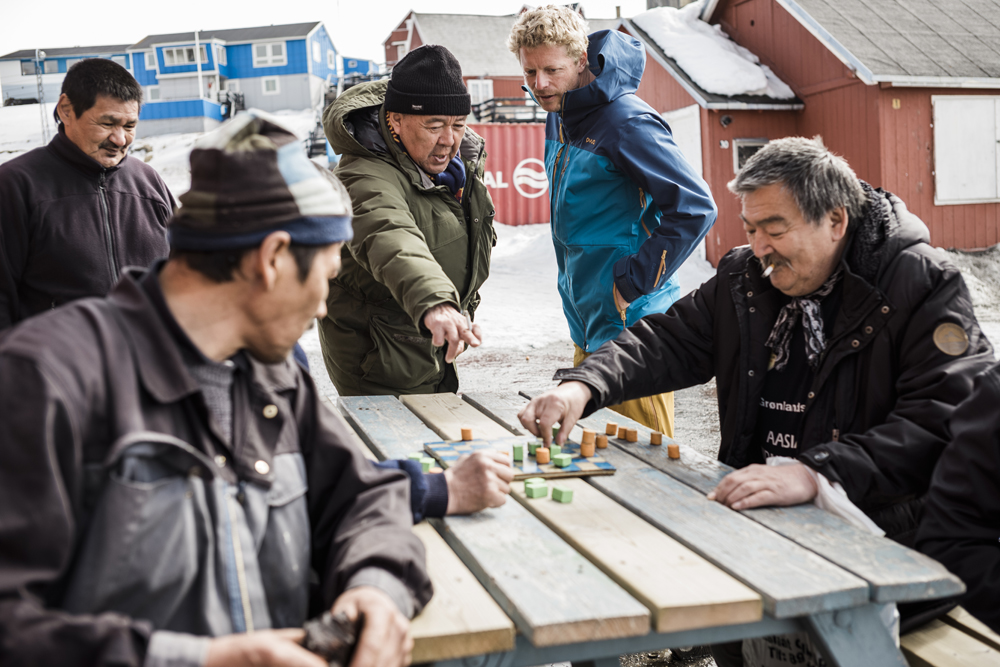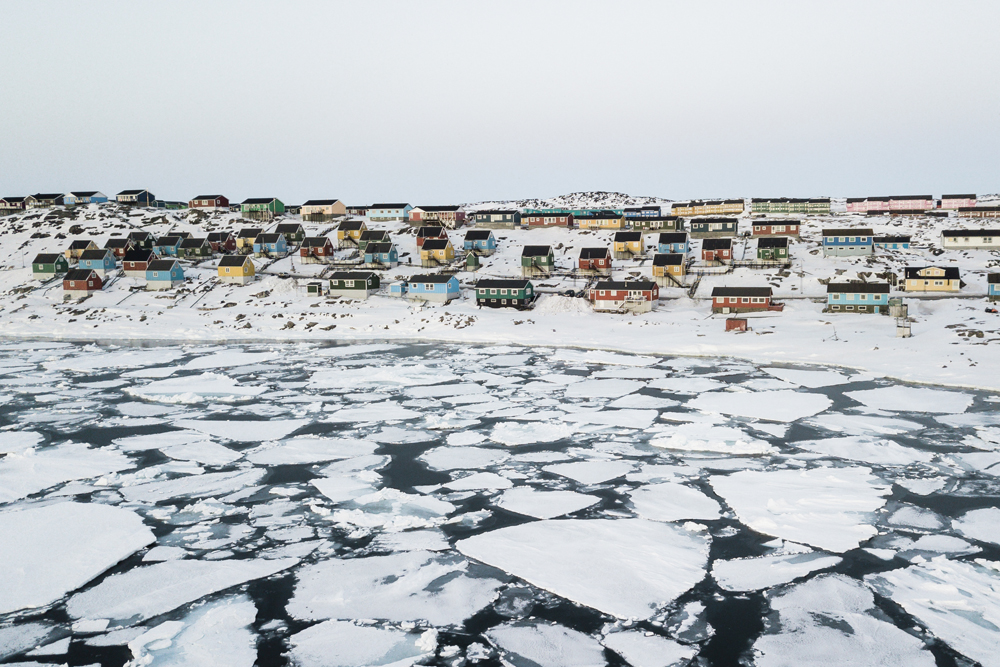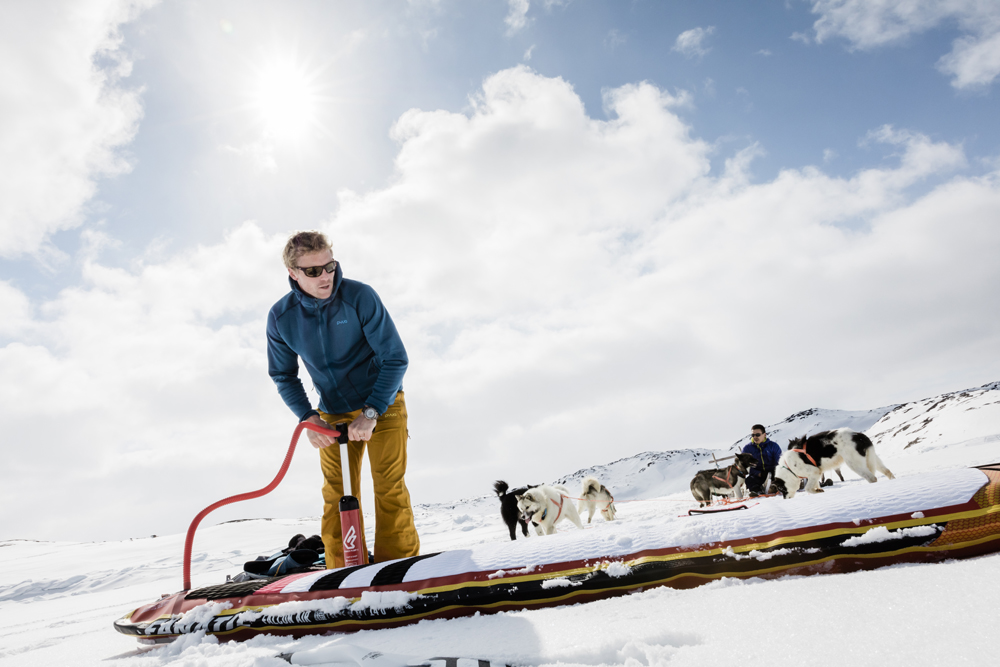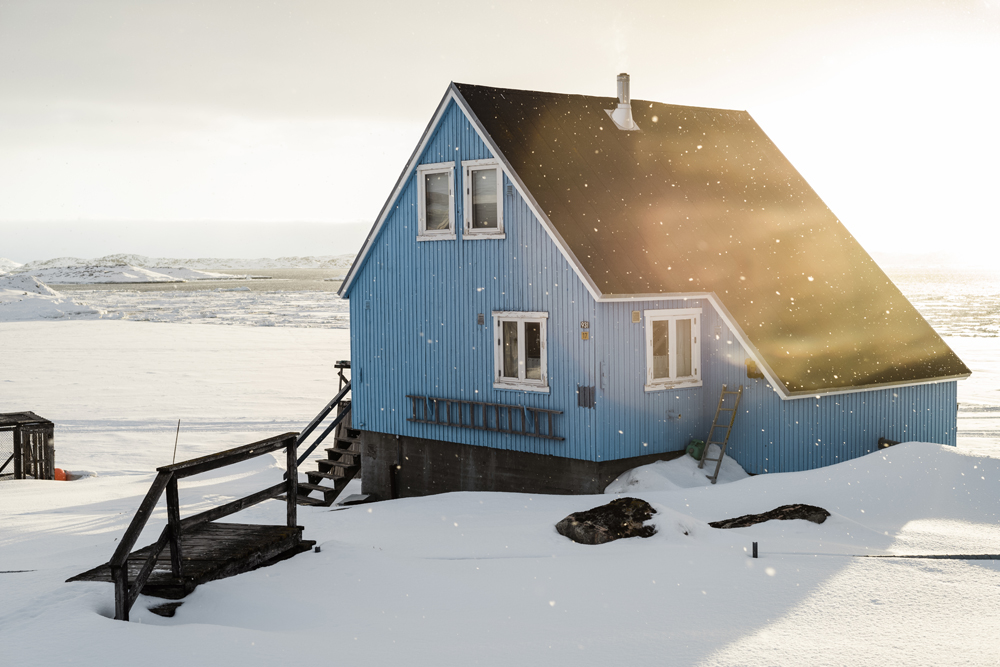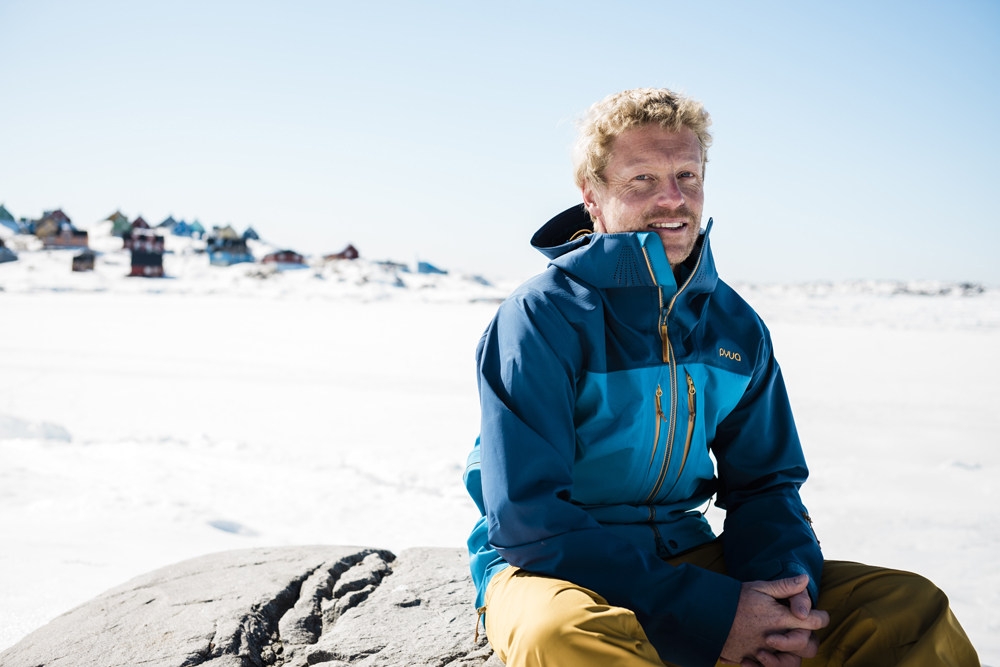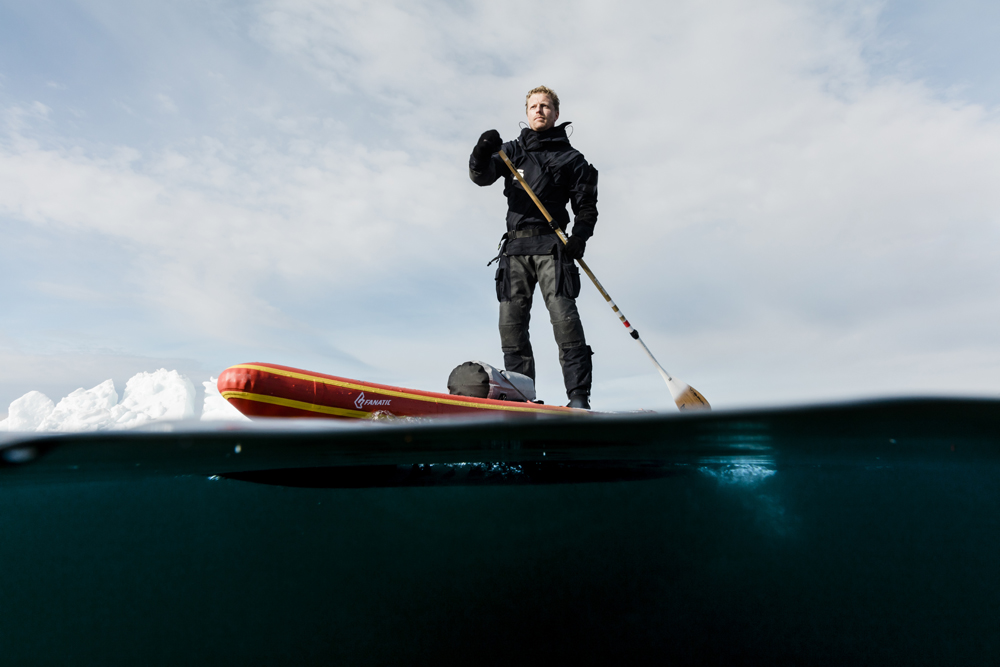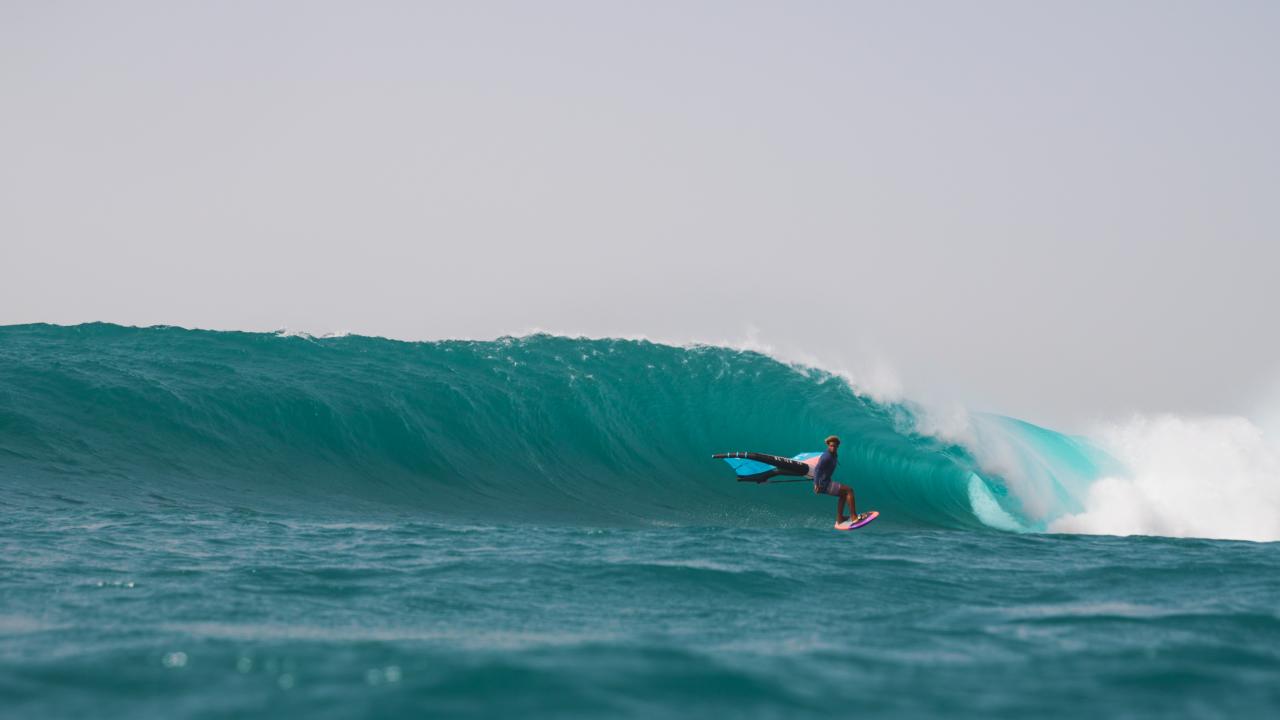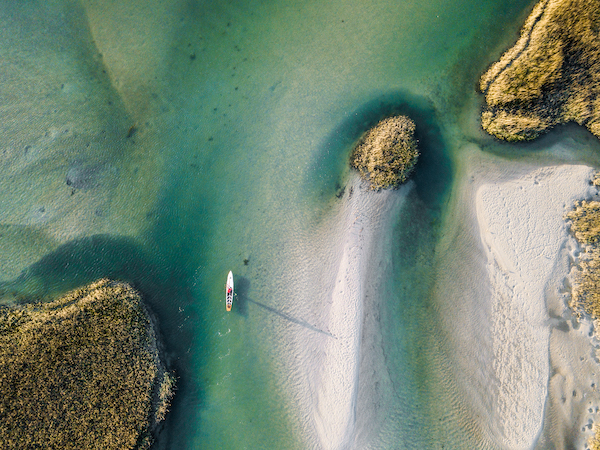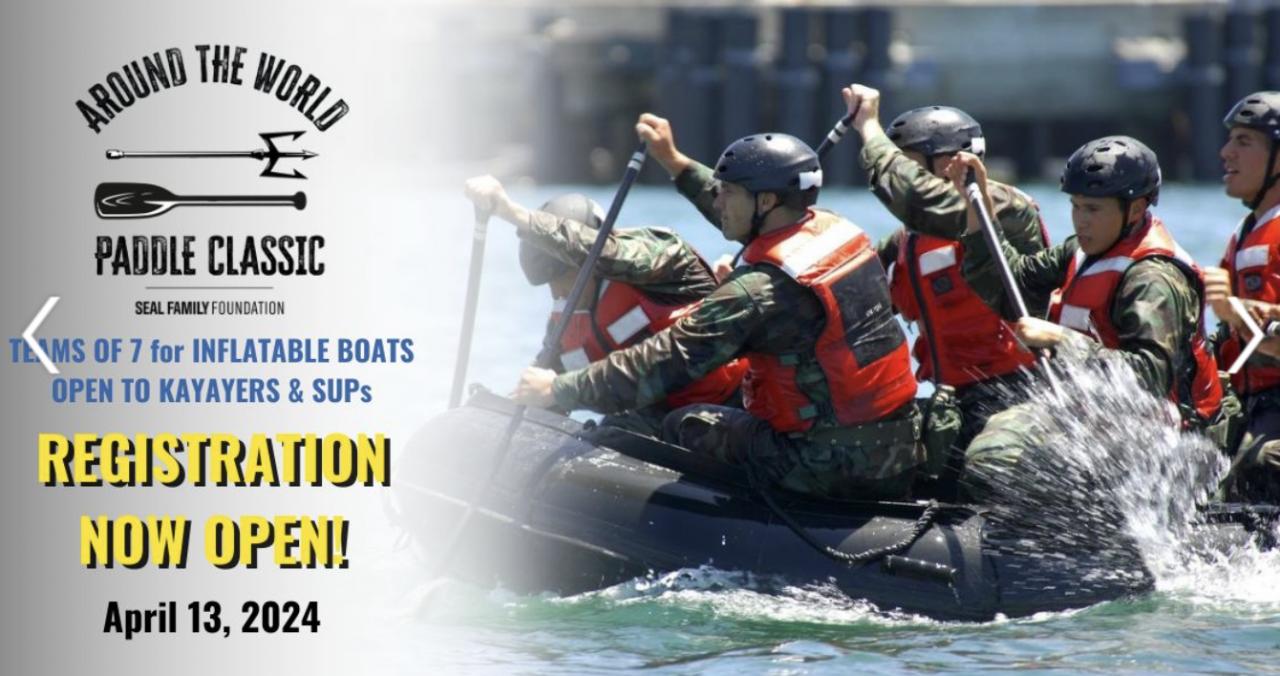Rugged icebergs from centuries of ice. The silence, the sheer endlessness of the polar region’s quietude. No soul far and wide, only nature and myself.
Together with two friends, Daniell Bohnhof and Max Stolarow, I traveled to Greenland in May 2018. The purpose? To paddle the coast of Greenland on my inflatable SUP to get an up close impression of the climatic changes on the arctic icebergs in the northern region.
Climate Change & the Impact on Ice
There are few scientists who deny the human impact on climate change. Average daily temperatures are rising and our influence is clearly visible, especially in the northern hemisphere of our planet. The alleged Ice Albedo feedback is one example of this cause and effect impact humans are having on our planet.
It goes like this: the ice pulls back; therefore, the protruding land and water surfaces reflect less sunlight into the atmosphere, which is where climate change accelerates.
I wanted to know the impact of rising temperatures in the north of Greenland.
It’s in the small town of Aasiaat, comprised of 5,600 residents, located on the southern tip of Disco Bay where we begin our journey. In an area like this, life moves on a completely different timeline than we are accustomed to in our latitudes. The only ways to transport from place to place within Greenland is through the use of planes, helicopters or boats. Per square kilometer, about 0.026 people live on this largest island in the world.
Paddling from Assiaat: Dog Sleds and Detours
Upon arrival, our escort boat is snowed in on the ice. Our driver, a prison guard in normal life, has only two days to spare. The whole port of Aasiaat is blocked full of ice from a strong northeasterly wind which pushed loose ice floes right into the bay of Assiaat. It is unlikely that we will run out by boat or board in those conditions.
Frustrated, we do not know what to do next. Getting upset does not help to melt the ice. Eventually the wind turns. On the second day we get an opportunity to begin our tour.
We double check the equipment only to discover that I forgot the fin to my board at home in Kiel while packing and repacking all my equipment. When I tell Max and Daniell about my forgetfulness, they throw me a doubtful look. The two of them are obviously waiting for the resolution of this bad joke, which unfortunately I don’t have.
Finding a surf shop in Greenland is impossible. So, I have no choice but to shape a fin with my multitool using a kitchen board. I attach it with a simple Spax screw in the fin box. I find out later that this construction is not entirely reliable.
Finally, we get the long-awaited call. Martin, our boat captain, has an idea and has prepared the dogs. The first few kilometers I will not paddle, but go via dog sled instead. Martin takes me by sledge to the end of the ice outside of town, and then heads back to retrieve Max and Daniell by boat.
I decide I will start off alone, but the ice floes move around me and I get nervous. Finally, I hear the sound of Martin's boat. He has made it out of the harbor and with tracker, radio and drone, the three quickly find me. With their presence I am stronger, and soon I am paddling out into the bay.
Survival on a SUP in Shifting Ice Fields
After a few kilometers, I notice ripples on the water, and more wind. The ice floes start to drift. I paddle through a small channel between the floes and, before I know it, they slide in front of the escort boat and between us. My path to the safety of the boat is quickly split and we are soon zigzagging between floating ice floes and each other.
There is no progress for the boat. My team has to find another way. I get stuck and grab the board to jump from ice floe to ice floe. It somehow reminds me of a computer game, but it's deadly. I have no idea if these ice floes will hold my weight. Of course, I have my inflatable SUP board with me to help keep me afloat, but still, it is a treacherous game of cat and mouse.
I'm wearing a survival suit from Secumar, which normally serves sea rescuers or naval aviators. Even so, this situation is very uncomfortable. The water is just above freezing and the air is -15 degrees. Under these conditions, I would like to avoid a swim in the Arctic Polar Sea. But the wind gets stronger and the floes drift. Slowly they pile up and threaten to completely close out the bay again. We decide to pack myself and board onto the boat and get quickly to the next town.
The interruptions to paddling due to the ice floes, plus the short sprints to get through the gaps fast, plus the adrenaline of the entire situation has exhausted me. In about 12 hours the wind is supposed to settle, leaving us time to rest and rejuvenate.
Greenland’s Trade, Travel & Daily LIfe Impacted by Shifting Ice
Thanks to our guide Martin, who translates everything for us, we get into a lively conversation with some locals. The Greenlanders are very sensitive to nature and its changes. Their whole life and survival is dependent upon this relationship. In winter, the Greenlanders hunt by dog sled, in summer by boat. Both are hardly possible nowadays.
Valdemar Petersen is an 84-year-old hunter. Using old images and noisy Super 8 videos, Valdemar helps us understand how Greenland’s nature and ice have changed. The transition times, where the ice is brittle, are getting longer each year. Now, the winter ice only comes for a short time in summer; large ice rugs drift throughout the bay, which should be connected further to the north with the rest of the summer ice. Everything that the Greenlanders can’t hunt, they have to compensate for by shopping in overly expensive supermarkets.
After a few hours, we say goodbye to Valdemar and move on. Slowly, we work our way north. I am paddling along the coast; however, allowing breaks on the boat is necessary in these temps and conditions. As the SUP board is too big to haul on the boat while inflated, my team puts me on ice floes, so I can pump up my board there before we carry on. Standing in the middle of the polar sea on an ice floe pumping up an inflatable is a strange feeling.
According to Valdemar, temperatures ranged between -20 and -30 degrees in the past. But, for me, the current -15 degrees is testing my limits. Water does not run off my board, but freezes on top. It makes the board slippery and, if I want to change my standing position, I immediately slip and chance falling in. Spikes would be the solution, but not with an inflatable board! Therefore, I have no choice but to stay put in one position for the day.
I also begin to lose my home-made fin several times. Luckily, my provisional fin floats. Nevertheless, the loss of the fin means that I have to turn around every time and look for it in the water. Taking the gloves off again, I have to grab the fin in the ice-cold water, paddle to an ice floe and fix the fin onto the board again. I eventually try some fine tuning with my multitool and carve a few millimeters around it. It works better as I found a stronger position for the screw.
Under these slow and frigid conditions, we slowly move north. Short naps in the companion boat or in small coastal dwellings revive me. For miles and miles, I paddle. We take long detours if an ice-closed area makes our direct route impossible. Again and again, Max sends his drone up to film but also to see which way is still open.
End of the Route: Sermeq Kujalleq glacier
After four days, we can see the first fragments of the Sermeq Kujalleq glacier appear on the horizon. It is located south of Ilulissat and has belonged to the World Natural Heritage Sites of UNESCO since 2004. The ice tongue pushes daily more than 20 meters into the bay; even the fragments of this glacier are impressive and clearly show which forces are at work here.
My goal during this paddling trip was to reach the ice border of this glacier. Depending on wind direction, the ice moves around and makes life difficult for the local people. This excursion made it clear – climate change and the life of the Greenlanders is being impacted due to changing ice conditions and altered floes.
After about 170 to 200 kilometers covered via paddleboard, with ice on the deck, cold fingers, snow on the face, moments of terror next to icebergs and many detours, we reach the closed ice cover in front of Ilulissat. Now, we can’t progress any closer to the glacier without risking our lives.
The Arctic Silence: Less Ice & Rising Temps
Tired, broken and exhausted from the tension, we reach Ilulissat, the small town on the eastern shore of Disco Bay. We gained a lot from this eco-directive paddling tour. Amazing impressions, important information and contacts to people we will never forget. In Ilulissat, this paddling tour ends with the direct experience of our impact on the health of the planet. I'll always remember the feeling of paddling alone among the ice floes next to gigantic icebergs in the utter Arctic silence of nature.

